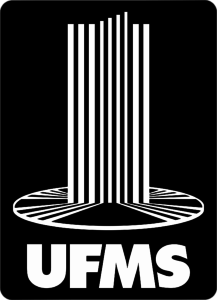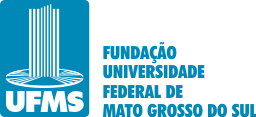Use este identificador para citar ou linkar para este item:
https://repositorio.ufms.br/handle/123456789/11756| Tipo: | Dissertação |
| Título: | ANÁLISE MORFOFUNCIONAL MUSCULAR PERIFÉRICA ULTRASSONOGRÁFICA EM PACIENTES NEUROCRÍTICOS: DA ADMISSÃO À ALTA HOSPITALAR |
| Autor(es): | Talita Santos de Arruda |
| Primeiro orientador: | Gustavo Christofoletti |
| Resumo: | Introdução: A lesão cerebral aguda pode resultar em déficits na função cognitiva e emocional, além de sequelas motoras. Avaliar e quantificar as perdas musculares precocemente é um desafio no contexto de pacientes não colaborativos. Objetivo: Analisar a relação entre as características musculares periféricas, por meio da ultrassonografia (USG), e os desfechos clínicos e funcionais de pacientes neurocríticos da admissão a alta hospitalar. Método: Trata-se de um estudo longitudinal, observacional e descritivo realizado em pacientes neurocríticos admitidos em uma UTI Neurológica. Foram incluídos pacientes com lesão cerebral aguda grave de origem traumática ou vascular, com até 48 horas de internação. A USG muscular foi realizada em três momentos: na admissão, na alta da UTI e na alta hospitalar, avaliando a espessura muscular e a área de secção transversa dos músculos bíceps braquial, quadríceps femoral e reto femoral e a ecogenicidade do músculo reto femoral. Além disso, a funcionalidade foi avaliada pela escala de mobilidade IMS. Na avaliação final de alta hospitalar, os pacientes foram divididos em grupos, com e sem sequelas motoras. Resultados: A amostra final incluiu 43 pacientes. Na amostra geral houve uma redução significativa na espessura muscular do bíceps braquial bilateral (p < 0,0001), quadríceps bilateral (p < 0,0001) e área de secção transversa do reto femoral bilateral (p < 0,0001). A ecointensidade do reto femoral esquerdo também apresentou uma redução significativa (p < 0,0001). A idade apresentou uma forte correlação negativa com a espessura muscular de reto femoral direito (r=-0,751) e a área de secção transversa direita (r=-0,727), além de uma correlação moderada com a espessura muscular do quadríceps direito (r=-0,643) e esquerdo (r=-0,647) e do reto femoral esquerdo (r=-0,674), e com a área de secção transversa esquerda (r=-0,70). Também foi observada uma correlação positiva forte entre o tempo de internação na UTI e o uso de ventilação mecânica (r=0,825), além de uma correlação moderada entre o tempo de internação hospitalar e o tempo de internação na UTI (r=0,599). A funcionalidade, teve uma correlação negativa moderada com a idade (r=-0,635). Conclusão: A perda muscular periférica em pacientes neurocríticos teve um impacto significativo na funcionalidade, especialmente em pacientes com sequelas. A análise ultrassonográfica revelou redução significativa na espessura muscular e área de secção transversa do bíceps braquial, espessura de quadríceps e reto femoral entre a admissão e a alta hospitalar. A correlação entre as variáveis clínicas e ultrassonográficas indicou correlações significativas entre as características musculares, idade, tempo de internação e funcionalidade. |
| Abstract: | Introduction: Acute brain injury can result in deficits in cognitive and emotional function, as well as motor sequelae. Early evaluation and quantification of muscle loss is a challenge in the context of non-collaborative patients. Objective: To analyze the relationship between peripheral muscle characteristics, through ultrasonography (USG), and clinical and functional outcomes in neurocritical patients from admission to hospital discharge. Method: This is a longitudinal, observational, and descriptive study conducted on neurocritical patients admitted to a Neurological ICU. Patients with severe acute brain injury of traumatic or vascular origin, within 48 hours of admission, were included. Muscle USG was performed at three time points: at admission, at ICU discharge, and at hospital discharge, assessing the muscle thickness and cross-sectional area of the biceps brachii, quadriceps femoris, and rectus femoris muscles, as well as the echogenicity of the rectus femoris muscle. Additionally, functionality was assessed using the IMS mobility scale. At the final hospital discharge assessment, patients were divided into groups with and without motor sequelae. Results: The final sample included 43 patients. In the overall sample, there was a significant reduction in the muscle thickness of the bilateral biceps brachii (p < 0.0001), bilateral quadriceps (p < 0.0001), and the cross-sectional area of the bilateral rectus femoris (p < 0.0001). The echogenicity of the left rectus femoris also showed a significant reduction (p < 0.0001). Age showed a strong negative correlation with the muscle thickness of the right rectus femoris (r = -0.751) and the right cross-sectional area (r = -0.727), as well as a moderate correlation with the muscle thickness of the right (r = -0.643) and left quadriceps (r = -0.647), left rectus femoris (r = -0.674), and with the left cross-sectional area (r = -0.70). A strong positive correlation was also observed between the ICU length of stay and mechanical ventilation use (r = 0.825), as well as a moderate correlation between hospital length of stay and ICU length of stay (r = 0.599). Functionality showed a moderate negative correlation with age (r = -0.635). Conclusion: Peripheral muscle loss in neurocritical patients had a significant impact on functionality, particularly in patients with sequelae. Ultrasonographic analysis revealed significant reductions in muscle thickness and cross-sectional area of the biceps brachii, quadriceps, and rectus femoris between admission and hospital discharge. The correlation between clinical and ultrasonographic variables showed significant associations between muscle characteristics, age, length of stay, and functionality. |
| Palavras-chave: | ANÁLISE MORFOFUNCIONAL MUSCULAR PERIFÉRICA ULTRASSONOGRÁFICA EM PACIENTES NEUROCRÍTICOS: DA ADMISSÃO À ALTA HOSPITALAR |
| País: | Brasil |
| Editor: | Fundação Universidade Federal de Mato Grosso do Sul |
| Sigla da Instituição: | UFMS |
| Tipo de acesso: | Acesso Aberto |
| URI: | https://repositorio.ufms.br/handle/123456789/11756 |
| Data do documento: | 2025 |
| Aparece nas coleções: | Programa de Pós-Graduação em Ciências do Movimento |
Arquivos associados a este item:
| Arquivo | Tamanho | Formato | |
|---|---|---|---|
| DISSERTAÇÃO VERSÃO DEFESA - TALITA ARRUDA.pdf | 1,79 MB | Adobe PDF | Visualizar/Abrir |
Os itens no repositório estão protegidos por copyright, com todos os direitos reservados, salvo quando é indicado o contrário.

